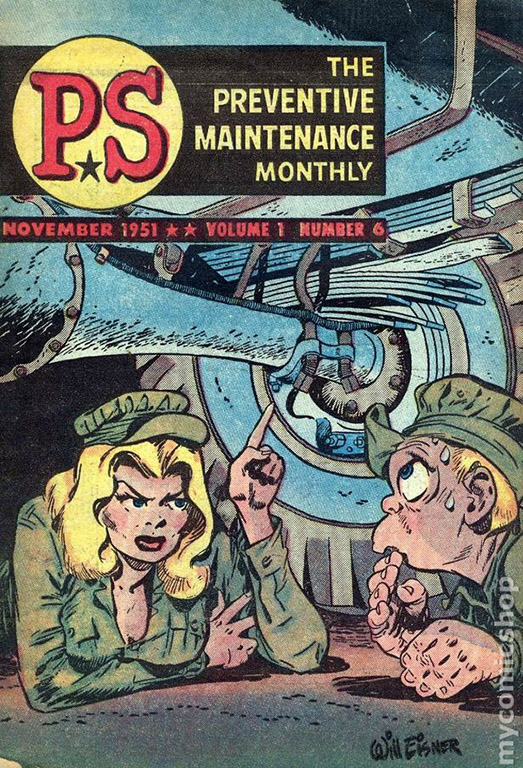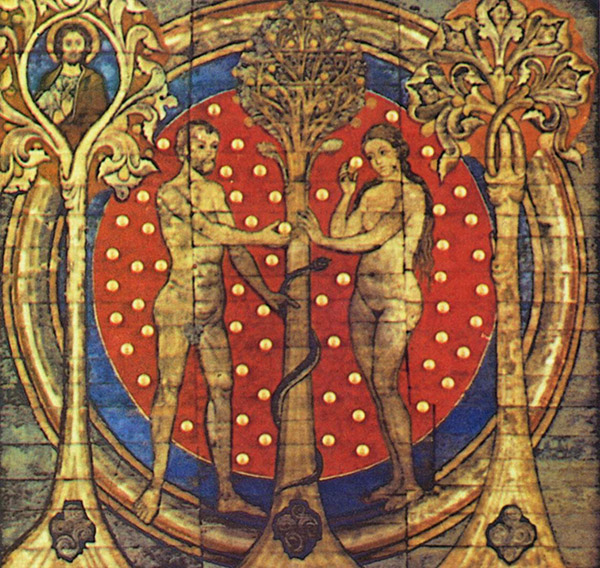Dru Johnson, Hope College professor of Biblical literature and director/founder of the Center for Hebraic Thought (hebraicthought.org), is an Evangelical Presbyterian Church minister, an editor for the Routledge Interdisciplinary Perspectives on Biblical Criticism series, host of The Biblical Mind podcast and a co-host for the OnScript Podcast. (More at drujohnson.com.)
Though a term related to handiwork, craft is sight too.
I watch too many YouTube videos, most made by experts in forming concrete, car repair, woodworking, cooking, passive home construction and many other things I want to understand before attempting. If I just wanted to learn how to do the thing, then watching a single video that shows me how to do the thing will do. But I want to see what these experts see.
Sometimes, I just want the straight dope on how to fix something. My car gives me a code that signals a problem with the ignition coil. I only want to watch videos that help me diagnose ignition coil problems. Other times, it’s hours later and I’ve caught myself watching a dozen short videos on ignition coils, timing chains, how small block engines work, manufacturing cars, welding, and so on. I fed the algorithm my time and attention, in kind, it fed me networks of rabbit holes.
I might begrudge the overflow of information, the attention-grabbing algorithms, or those evil empires vampiring my time away. But that’s not necessarily the case. Most often, I start with a specific need – like ignition coil repair – and end up with an expert talking to me about all the various ways an engine can break. They patiently explain how these systems interconnect and usually with a flair of entertainment.
In the 1970s they had books that basically did the same thing. I remember my dad using John Muir’s animated VW “step by step” repair manual “for the compleat idiot.” The US military employed the same sense of humour and artistry to explain mechanical principles to the troops and to give practical tips for maintenance and repair of rifles, missiles and jeeps (i.e., PS: The Preventative Maintenance Monthly).


Knowing how to do basic maintenance and repair is good enough for government work, I suppose. But from the complex messes of our communities to the creative vision needed to design buildings, plumbing, family life, gardens and workplaces, we need well-crafted sight honed by repetitive experiences and experiments.
We often think of craft as the hand on the engraving tool, like Aaron’s hand to the calf. But craft is sight too. Craft sees beyond the superficial features of appearance, the seemingness of the cosmos into the deeper structures that scaffold and interconnect the world. The impenetrable (to me) symptoms of plumbing problems in my 125-year-old house require well-crafted insight to fix, honed by years of disparate experiences with pipes, pressures, leaks and boilers. The plumber’s physical techniques of soldering, pipe bending, joining and more can be learned quickly. Her plumber’s sight cannot.
It’s the sight that God has in the creation. Creation is not instant. God does not say, “let the cosmos exist in final form.” God formed habitats and filled them with creatures through sexual reproduction. Over and over God famously “saw that it was good.” I ask you to hang with me here on this seeming diversion into Genesis 2–3.
With the man too, God crafted his sight to find his “strong ally” in the woman.[1] God says, “it is not good for the man to be alone.” The solution was not, “then God made the woman and presented her to him.” Rather, God led the man-of-dirt (ha’adam who was made from ha’adamah) through a process of naming other dirt-formed creatures and not finding his ally in any of them (Gen 2:19–20). What is remarkable here? That God crafts the man’s vision of a “strong ally” through a repetitive act of naming. The climax and resolution to this little story confirm that his poetic eureka is the goal of process. Interpretations struggle to capture the sense of finality after repetition in the man’s cry, but “this, at last” does the trick (Gen 2:23):
This, at last, is bone of my bones,
and flesh of my flesh.
She shall be called ishah (woman)
because she was taken out of
ish (man).

Craft is skilled sight. So is craftiness. The serpent is called “more prudent (arum) than all the creatures of the field God had made” (Gen 3:1). Translators often slant this language prejudicially against the serpent, saying the serpent was more “cunning” or “crafty.” Genesis 3 acts like the first five minutes of an epic film (i.e., the whole book of Genesis), and so it seems unwise to stack the deck against the serpent when we’re just learning the characters. And, the serpent is shown to be prophetic by the narrator.
But the term “crafty” means prudent or wise everywhere else in the Bible. This use of wisdom language here in the garden begs us to ask the question: Is the serpent wiser than any other creature of the field? Yes, even more than the man and woman. As Old Testament scholar Walter Moberly once argued, everything the serpent says comes true.[2] Even more, the narrator uses the exact words of the serpent to show that they came true. I’ve mapped it in a handy chart here for your perusal:

Again, it’s the narrator who tells us that the “eyes of both were opened” and it’s God who says, “the man has become like one of us knowing good and evil” – precisely as the serpent had said.
Whatever the author wants us to know, we should not think that shrewd insight alone is the goal. The crafted vision of the serpent is not wrong on the facts, but wrong in its aims. It’s not that the serpent doesn’t know what it’s talking about. Rather, God’s question to the found man: “Who told you?”, reveals the actual problem. The serpent was indeed wiser than all the animals of the field, but the man wasn’t meant to heed his instructions and embody his prescriptions in order to gain God’s vision.
Craft requires truer sight. This is the very problem facing the proverbial young man in Proverbs 7–8. Both Ladies Folly and Wisdom are sexually attractive. Both cry out to the young man. Yet, he cannot distinguish which woman will strike him down and which will offer life abundantly. Proverbs 1–8 repeatedly places the young man’s parents over his shoulder in a variety of situations developing his sight.
Representing faithful guidance from God through the family, they are the voice to whom he should be listening, inclining his ears toward, in order to see the situation more truly.
Well-crafted sight requires that we inhabit the prescriptions of our traditions and families. Scripture imagines an ideal upbringing, where our bodies have practised experiments from our youth like the young man – parents over our shoulders pointing and honing our vision of what is and what could be.
When we speak of craft, we must be honest about the vision required for it. And when we picture that honed vision, Scripture asks us: To whom are we listening, and, what rituals are they prescribing for us in order to see what they want to show us? Such traditions, communities and rituals produce what we commonly call “a craft.” In various points of life, we might want the final product of the craft: someone to fix our boiler, settle a child or recover files from a dilapidated hard drive. In those moments, we wish for the vision of a master plumber, experienced mother or skilled technician. But these modifiers – master, experienced, skilled – only mean as much as the traditions that shaped them, the voices and the rituals within the communities that honed their sight. An experienced mother still might be an abusive mother. A master plumber might not care enough to seal every leak or may see subtle leaks as potential for creating future business. Serpents can be the wisest person in the room, but that doesn’t mean we should listen to them!
And so, we must attend to the social bodies that surround the craft, that form the person into the craft. According to Deuteronomy 4, Israel’s vocation to the world was to be a wise and discerning nation. For what? For the sake of wisdom? No! Through the repetitive rituals and guidance of God’s instruction (often translated “law”), Israel’s wisdom aimed at justice and righteousness for creation itself, loving the neighbour as oneself (Lev 19:18), loving the foreigner as oneself (Lev 19:33–34), and thereby fulfilling God’s command to love, well, God (Deut 6:5).
We require well-crafted vision in order to love neighbour, stranger and God in ways fitting to creation and our vocations. Scripture poses a more substantive muddle for us: to whose voice are we listening and what repeated rituals are they prescribing in order to craft our vision. What anchors the social bodies to whom we submit our bodies, energies and attentiveness? Or in biblical metaphors, in whose soil are we planted? Craftiness doesn’t guarantee that our expertise will be properly aimed.
The dirt of our traditions, its voices and rituals, must find a source in the instruction, the voice, of God through Scripture and the living Holy Spirit in our communities. That is our only hope of being a blessed canvas stretcher (like Paul), builder (like Jesus), civil court judge (like Deborah), or any of the technical vocations in which we hone our skills.
[1]. Leslie Bustard, of blessed memory, gave me this phrase “strong ally” as a better attempt at translating ezer kenegdo, rather than “helpmeet” or “fit helper.” It makes better sense of both Hebrew terms as they are used throughout the Bible.
[2]. R. W. L. Moberly, “Did the Serpent Get It Right?,” in Journal of Theological Studies 39, no. 1 (1988): 1–27.

The Kirby Laing Centre for Public Theology in Cambridge. Charity registered in England and Wales. Charity Number: 1191741
Kirby Laing Centre, The New Mill House, Unit 1, Chesterton Mill, French’s Road, Cambridge, CB4 3NP
© 2022 The Kirby Laing Centre for Public Theology in Cambridge